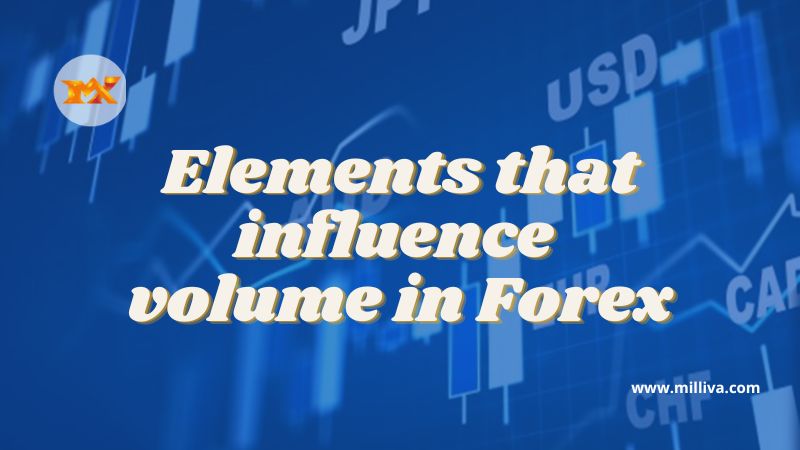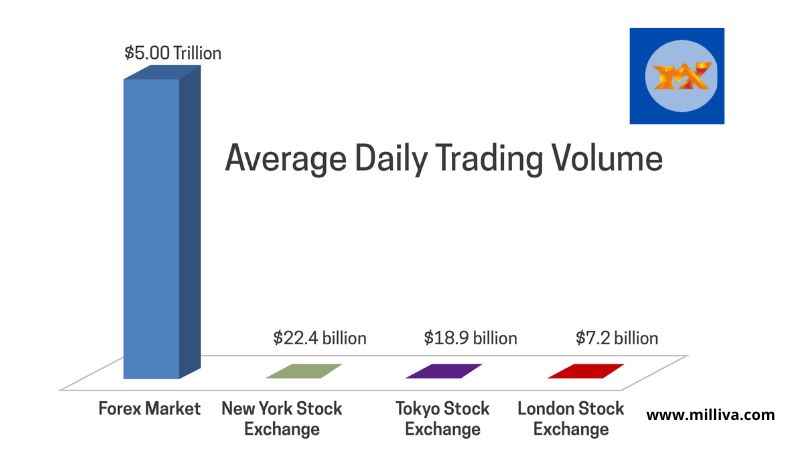Why Trading Volume is Important in Forex

![]()
A financial asset’s trading volume is a measurement of how much it has changed hands over a specific period of time. The volume of shares exchanged for stocks serves as a proxy for volume. Volume for futures and options determined by the number of contracts that exchanged. Volume used by traders to assess liquidity, and they integrate volume movements with technical indications to make trading decisions.
Gaining insight into the level of conviction driving advances and dips. In particular stocks and entire markets can accomplished by observing volume patterns over time. The same holds true for option traders. As trading volume serves as a gauge of the current interest in an option. Volume actually has a significant impact on technical analysis and clearly displayed among several key technical indicators.
How Much Trade Volume is There
The total number of times an asset exchanged over a specific time period known as the trading volume. Typically, it measured for exchange-traded assets such commodities, futures, options, bonds, and stocks. Trading volume covers the total value of an item bought or sold during the transaction. As well as the number of transactions that are taking place.
Depending on the selected time period, volume charts plotted. You can see an hourly chart, a daily chart, or a weekly chart, for instance. In contrast to the daily report, which released after market closure and is more precise, hourly volume reports are typically just approximations.
What Function Does Trading Volume Serve in the Forex Market
The term “Forex (FX) volume” refers specifically to the quantity of lots exchanged in a currency pair. Over a predetermined period of time. This time period could be whatever duration you choose, including a day, month, or year. Most brokers offer a customizable user interface. That allows you to select the “when” of the trade data that made available. The amount of currency purchased and exchanged, in the simplest terms, the trading volume in forex.
Volume information frequently shown by brokerages as a technical indicator. That can offer a helpful view of market activity and prevailing trends. Many people use it to help them make decisions on whether to buy or sell foreign currency.
Although trends can take many various shapes. They often refer to the price or volume of a market’s upward or downward momentum rather than a stable period. Volume data that is more or lower than usual typically signals continued activity or a trend that is about to cease. As volume trends detected within the data. It can also provide individuals with an eagle eye with useful information into when to execute their trades.
The Volume indicator can confirm (or offer non-confirmation) for reversals in addition to displaying the total number of lots and helping traders comprehend market movements. High selling volume at a resistance level frequently indicates a reversal, and low selling volume indicates a break in the resistance.
Some traders look at the volume data to check if a support barrier crossed or if there has been a break in the level of support. Which indicates by high and low purchasing volume, respectively.
This point could be a little unclear to novice Forex traders. Therefore let’s explain what high volume and low volume tell us. It most definitely will.
How Does Forex Volume Change
Macroeconomic events that have an impact on regional and national economies. Such as fiscal or geopolitical developments, are the main factors affecting volume. But this is not the only aspect.

Other Elements that Influence Volume Include
Time of day: Unlike cryptocurrency markets, Forex is not open around-the-clock. It opens at various times for various nations. With each nation’s currency pairs and markets seeing a considerable increase in volume when it does. The volume of EUR (Euro) pairings rises when European markets open. The volume decreases when it shuts.
Domestic Economics
Think about the elements in this category, such as the inflation and interest rates. The volume of trades in a currency pair is significantly influenced by national economic statistics.
Worldwide Economics
Consider trade statistics, penalties, and international trade deficits and surpluses as factors that can significantly affect the volume of trades.
News of the Day
There are many different ways to get news. War and sanctions have destroyed the Russian Ruble, as we have witnessed at the beginning of 2022. Currency pair prices can dramatically increase in response to unexpected major news events like the passing of a leader.
Major Levels
Technical levels reflect fluctuations in the purchasing and selling pressure. Many traders use these levels as reliable predictors of whether volume will increase or decrease, which it almost certainly will do as price approaches particular levels.
High Trade Volume: What does that Mean
There are many traders in the market, which is indicated by a high volume. While this doesn’t always imply that all traders will take the same positions, it usually indicates that a trend is there.
A high trade volume reveals whether the momentum is still present. The market price typically goes in the same direction as trading volume does, but this does not necessarily imply that high volume equals high prices because there can also be a high amount of short-sellers.
When it comes to liquidity, high trading volume is viewed as a substantial advantage because more buyers and sellers are available on the market, increasing the likelihood that you’ll find a counterparty for your trade at your preferred price. Tighter spreads are also associated with greater liquidity.
Prices tend to fluctuate faster during times of high volume since there are so many people placing bids and offers on the item. Because tick volume is always available, unlike trade volume, which is only updated occasionally, some investors choose to utilise tick volume—the number of price changes in a contract—instead of trading volume.
Low Trading Volume: What does it Mean
Less liquidity will result from low volume, which suggests that there are fewer buyers and sellers on the market. Low liquidity increases your chance of losing money if the market moves against you because it can leave you in positions you can’t get out of. In the stock market, in particular, less liquidity can result in wider bid-ask spreads.
How to Trade with Volume
Volume is employed as a technical indicator to provide a clearer picture of market activity and trend strength. Decisions about whether to buy or sell an asset can be based in part on volume.
Volume is primarily used to determine price momentum, with high and low volume indicating whether or not a trend is likely to continue. However, it can also be utilised to decide when to trade in order to get the best execution.
Volume is frequently utilised to validate reversals. If you wanted to determine whether a support barrier had been reached and the price would reverse, you would look for high buying volume; but, if you wanted to determine whether the level of support had been broken, you would be looking for low buyer volume. In contrast, you would look for heavy selling volume to confirm a reversal on a resistance level and low selling volume to confirm a breach in the level of resistance.
In a risk-free trial account, put what you’ve learnt to the test and start utilising volume to develop your approach. Alternately, if you’re ready to start trading, you can open a real account right away.
How to Determine Trading Volume in Forex
Given that the FX market is a decentralised over-the-counter market, volume calculation can be challenging. This implies that there is no official record of trades and that partial volume statistics, which can either come from a specific market maker, broker, or liquidity aggregators, must be considered as a proxy for the overall numbers.
visit us on: www.milliva.com





